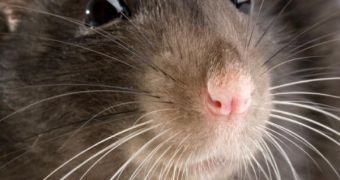Understanding exactly how we learn and remember has been a long-standing goal in science for many years, but investigations into the issue have thus far yielded inconclusive and contradictory results. Recently, a new study conducted on rats has revealed a new aspect of the problem. The team of investigators, from the Massachusetts Institute of Technology (MIT) Picower Institute for Learning and Memory, has discovered that rats seem to plan their future actions on instant replays of their past activities. The study could offer new ways of analyzing how animals and humans remember and learn.
“By understanding how thoughts and memories are structured, we can gain insight into how they might be disrupted in diseases and disorders of memory and thought such as Alzheimer's and schizophrenia. This understanding may lead to new methods of diagnosis and treatment,” the Picower Institute Sherman Fairchild Professor of Neuroscience, Matthew A. Wilson, explains. He is also the author of the new study, which was published in the August 27th issue of the journal Neuron.
The team found that the hippocampus – the sea-horse-shaped structure inside the brain that is considered to play a fundamental role in learning and memory – had a large level of activity. Single neurons firing in this region are believed to be connected to remembering past events, but, in the case of the test rats, it soon became obvious that the animals could remember each single instance in which one of these neurons was activated. The instant-replay feature is apparently available to the rodents while performing various tasks, pausing between actions, or even when sleeping.
In previous studies, it was shown that rats that had just learned a new path through a maze constantly fired hippocampus neurons during sleep, in exactly the same sequence in which they were fired when the animals were engaged in finding a way out. This led the experts to believe that these neurons played an important role in forming accurate memories. In the new experiments, the researchers noticed that the rodents' brains fired their neurons in various patterns, depending on the location the animal had in the maze.
When the animals stopped, their neurons continued to fire in the same patterns as when they were running, a discovery that had scientists puzzled. “This may be the rat equivalent of 'thinking.' This thinking process looks very much like the reactivation of memory that we see during non-REM dream states, consisting of bursts of time-compressed memory sequences lasting a fraction of a second. So, thinking and dreaming may share the same memory reactivation mechanisms,” Wilson explains, quoted by ScienceDaily.

 14 DAY TRIAL //
14 DAY TRIAL //